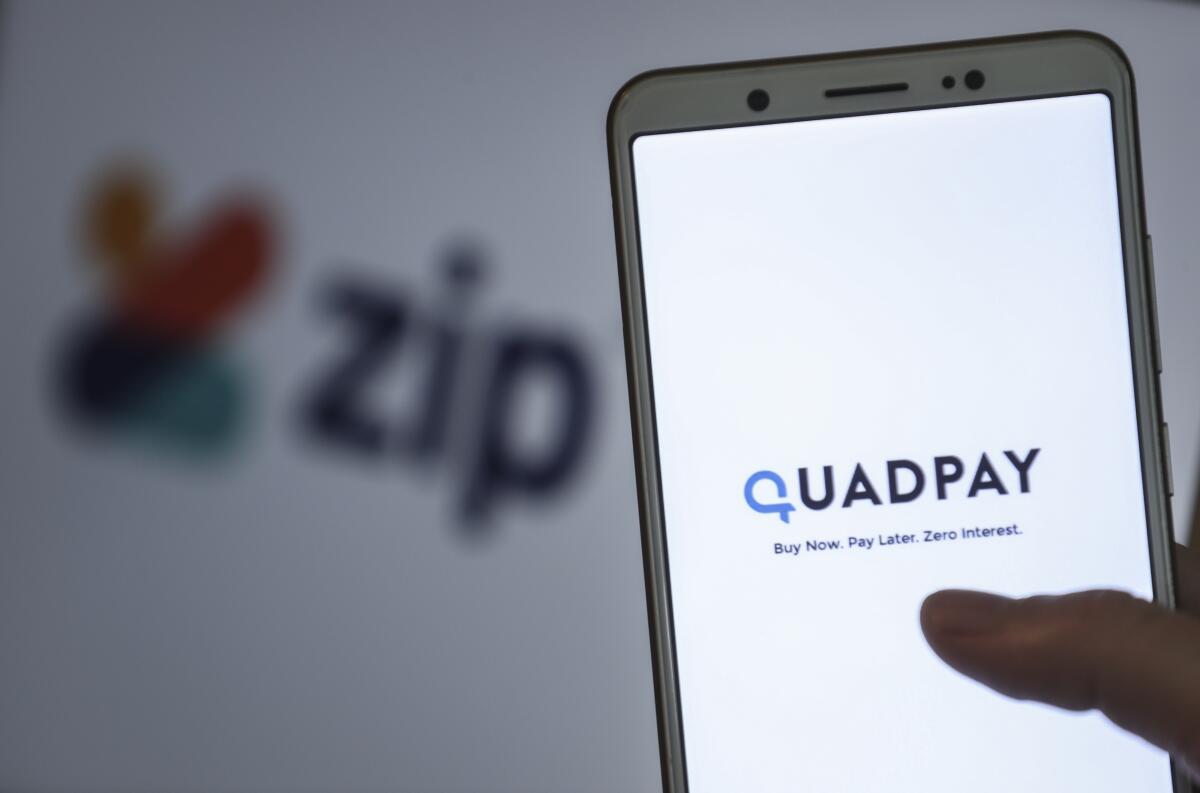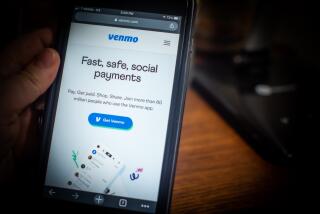Buy-now-pay-later apps: How they work

- Share via
WASHINGTON — If you’ve been in the mall or scrolling through online shopping sites recently, you might have seen brightly colored ads urging you to split your purchase into four payments with buy-now-pay-later companies such as Quadpay, Afterpay, Klarna, Affirm and Sezzle.
Designed to attract young shoppers in stores and online, the apps promise a safer, easier alternative to credit with no interest and no surprise fees. They are growing in popularity in the United States, prompting a dialogue on how to balance the services’ advantages with consumer protection concerns.
Here’s a step-by-step look at what happens when you use one of these services.
Signing up
Customers must first download one of the apps and create an account, providing their full name, email address, phone number, date of birth and billing address. Typically, the apps text and email verification codes to the account holder to ensure the contact information is correct and prevent fraud.
Before making a purchase, app users must provide valid debit or credit card information that will be used for payments. Depending on the payment plan, some companies may request your Social Security number.
During the sign-up process, you also accept terms and conditions and determine whether the apps can send push notifications to you.
Do financial apps targeting millennials and Generation Z promote overborrowing among consumers already struggling with high debt and poor credit?
Behind the scenes, apps perform a so-called soft credit check and run customer information through their risk algorithms.
For a first-time user, the entire sign-up and payment process takes less than 10 minutes.
How you pay for purchases
Some apps offer long repayment plans with interest on big-ticket items. But the most popular buy-now-pay-later plans consist of four installments, with each payment covering 25% of the total transaction, including taxes. The first installment is due immediately upon checkout.
After that, the remaining installments are due every two weeks. Many apps encourage customers to sign up for automatic payments so users do not have to go into the app and approve each subsequent installment charge to their debit or credit card.
How the apps make money
There are several ways that the apps make a profit.
Like credit cards, buy-now-pay-later companies charge merchants a fee on every transaction, usually 2% to 8% of the purchase amount.
Some apps also charge users a fee to use their platform. Quadpay, for instance, charges a $1 platform fee with every installment payment.
When users miss payments, they are also subject to late fees, which usually start at $5 to $15, depending on the app. Those fees can increase if a customer continues to default on installments.
How are the apps different from credit cards?
Buy-now-pay-later services usually approve purchases on a one-time basis, meaning users must request approval from the companies for every transaction.
In contrast, credit cards are a form of revolving credit. That means customers can use their card for multiple purchases until they hit their credit limit.
Credit card companies and banks consult your credit history to determine whether they should offer you a card and, if so, to set a credit limit.
Buy-now-pay-later services may also review your credit history, but pay-in-four plans typically do not perform a “hard” inquiry to establish a line of credit, which would affect your credit score. Instead, most of the apps use their own algorithms to determine whether they should approve your purchases.
That means that it is often much easier for people with no credit history or a bad credit score to receive approval through the services.
Lastly, buy-now-pay-later services lack some of the protections that credit cards offer, including for billing disputes.
More to Read
Get the L.A. Times Politics newsletter
Deeply reported insights into legislation, politics and policy from Sacramento, Washington and beyond. In your inbox twice per week.
You may occasionally receive promotional content from the Los Angeles Times.












